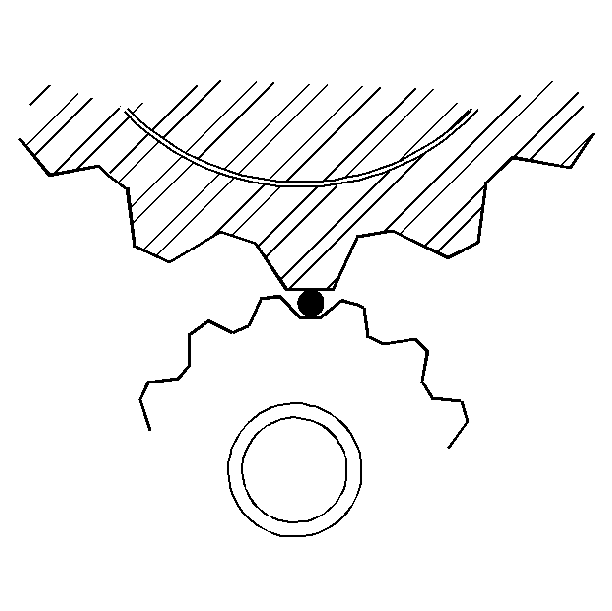
Caution: Keep fingers, tools, and any other objects away from the opening in
the drive end housing while making electrical connections. The strong shifting
action of the starter solenoid can cause severe personal injury
or damage to components as the drive pinion moves into the cranking position.
Notice: When the starter motor has been disassembled or the solenoid switch
has been replaced, it is necessary to check the pinion clearance. Starter
motor may not engage properly of the pinion clearance is incorrect.
- Measure the pinion clearance as follows:
| 1.1. | Secure the starter motor in vise or equivalent fixture so that
the opening in the drive housing is accessible for measurement. |
| 1.2. | Disconnect the field lead from the solenoid switch "M"
terminal and insulate it carefully. |
| 1.3. | Connect one 12-volt battery lead to solenoid switch "S"
terminal and the other to the starter frame. |
| 1.4. | Flash jumper lead momentarily from solenoid switch "M"
terminal to the starter frame. This will shift the pinion into cranking position
and it will remain so until the battery is disconnected. |
| 1.5. | Push the pinion back as far as possible to take up any movement,
and check clearance with feeler gage. Clearance should be 0.25 mm to
4.06 mm (0.010 in to 0.160 in). |
| 1.6. | Means for adjusting pinion clearance is not provided on the starter
motor. If clearance does not fall within acceptable limits, check for improper
installation and replace all worn or damaged parts. |
| 1.7. | Disconnect 12-volt battery leads from solenoid switch "S"
terminal and starter frame. |
| 1.8. | Reconnect the field lead. |

